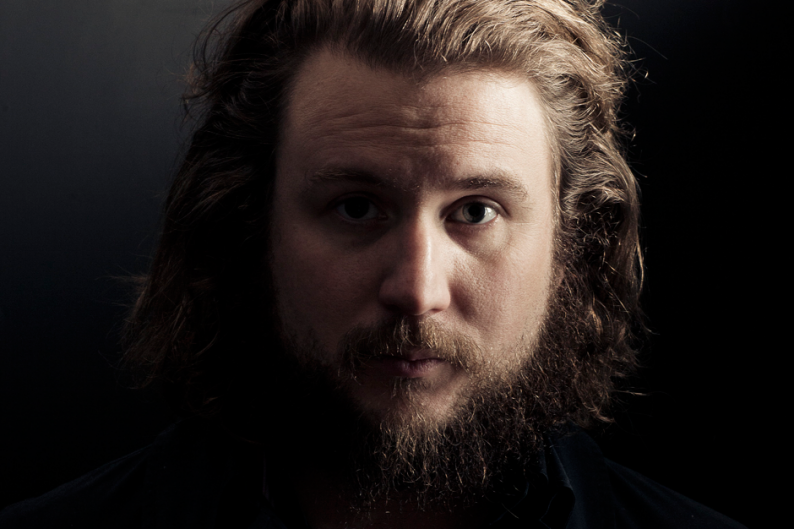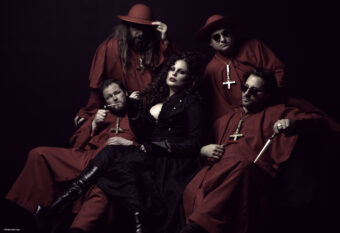By: Peter Gaston
Seattle reared two of rock’s most treasured talents, both of whom were also two of rock’s most troubled. For author Charles R. Cross, former editor of Seattle mag The Rocket, the stories of Jimi Hendrix and Kurt Cobain are perpetually intertwined. While working on Heavier Than Heaven, his 2001 Cobain biography, Cross dug deep into the fabric of the Seattle area, tracing Cobain’s doomed path into eternal remembrance. (He also famously uncovered that origin of the phrase “Smells Like Teen Spirit” was some cheeky graffiti by then-Bikini Kill frontwoman Kathleen Hanna). Along the way, Cross kept encountering Hendrix’s past in Seattle’s old neighborhoods, and also in the unnervingly similar storylines associated with the two left-handed axemen, both of whom passed at the age of 27. In his new book, Room Full of Mirrors, Cross offers readers another painstakingly detailed and impassioned tale of another lost rock legend. SPIN.com reached Cross in Seattle while he struggled home through crosstown traffic.
You were working on the Cobain book when this Hendrix project blossomed into something bigger. What was it like to have that intersection between such major characters in your writing career?

Also Read
Compact Discs: Sound of the Future
In some ways, it was more organic than you might think. Being the editor of The Rocket for fourteen years, both Hendrix and Cobain were people I had written about extensively before, and were both people I had followed over the course of their careers… What surprised me was that there were more parallels between the two men than I had originally imagined. There’s the obvious things: They’re both left handed guitar players who came out of the Northwest and both died at the age of 27. Both released four albums during their lifetimes and both of these men had essentially four years of fame and both had issues in their lives that involved drugs. Those parallels are really quite remarkable when you begin to think about it. And there also is a much deeper parallel between their lives in that both of these men were outcasts and in some ways both came from disenfranchised parts of society. In Hendrix’s case it obviously was a combination of both his poverty and his race. With Cobain, he was essentially poor white trash. Jimi clearly had more against him to start with because race is a much harder thing in America to overcome, whereas class in America can basically be overcome with money.
You mention all the challenges that Jimi had to deal with, especially in comparison to Kurt. Do you think that Jimi had a more amazing rise to notoriety because, in addition to some of Kurt’s problems, he had to battle through race as well?
Absolutely… In my opinion, the fact that Jimi Hendrix survived his childhood and went on to become an artist; they should build a statue to him for that. I see Hendrix as an extremely positive role model for kids who come out of poverty and out of broken homes. What he was able to achieve in his life — the level of drive he brought to living — is phenomenal considering the circumstances in which he grew up… I think that what Jimi accomplished in overcoming racial and social prejudices is a great story of civil rights. Hendrix is absolutely one of the first African American rock artists to have a large following of white fans and that alone is really extraordinary. He was a groundbreaking artist… It forever frustrated Jimi that he could not get his records played on most African American stations. If he would have truly done some of the work he wanted to do with Miles Davis and Bill Evans, I could have seen him doing more of the genre crossing than he did.
I feel like that sort of division exists today. There is a one-way flow in pop culture as far as music goes. A lot of white people like rap and R&B, but even bands like Living Colour or Sevendust that have African American members aren’t crossing over.
They’re not. And that’s a shame… What’s funny is that the perception is that an African American can’t be influenced by a Caucasian and vice versa. Of course, music isn’t like that. I mean, Jimi Hendrix loved rockabilly and he loved country music. Just because he also liked R&B, that doesn’t limit who his influences were. Dylan was far and away his greatest influence — not necessarily on his guitar playing, but in Jimi’s way of imagining himself. Dylan being an outcast and Dylan being left of center and not having a great voice; those were all things that gave Jimi the confidence to be a star in his own right. I think we still look at people in music and define them by their race first and foremost. We see Vernon Reid and we think of him as a black guitar player before we think of him as a guitar player, and I think Jimi Hendrix helped start to dissolve those barriers, but we still have a long way to go in examining race without reverting to traditional racial stereotypes.
One of the things with this book — and I’m sensing this very much in our conversation — that there was this air of discovery about the whole thing.
There are already a lot of books written about Jimi, but I wasn’t aware, going into it, how much there was to discover. When I decided I wanted to write this book, I wrote out a list of 100 people I wanted to interview and I got through 95 of those people by the time I was done — but I got another 200 people that either hadn’t been in popular accounts or just had amazing stories to tell. One example of this in the book is Carmen Goudy who was Jimi’s first girlfriend, the first person to ever kiss him, and was there the day he got the electric guitar. She’s never been in another book; her name has never appeared in print. She’s one of many people I was able to track down that would help me give a fuller portrait of what Jimi Hendrix’s life was like.
You mentioned some of the plaques and stuff that should be in place to honor Hendrix in Seattle, but do you think the way he’s currently memorialized in his home town is adequate, and, if not, what would you change to ensure the fact that his legacy is preserved?
First off, the way he’s been memorialized in Seattle so far has been an insult. It’s ridiculous and unbelievably shortsighted. There is one heated rock in the middle of the zoo, in the middle of the African Safari — and in my opinion, that’s racist. I mean, Jimi had African ancestors but he also had Cherokee ancestors, too. Why don’t they put the rock next to the Indian Elephant for God’s sakes? It just makes no sense, and that just shows you that there hasn’t been anything in Seattle essentially to honor Hendrix. Part of it is that the whole drug hysteria that embraced America in the ’80s. When they were first discussing it, the beef was that this guy did drugs, and whether we should honor a drug user. So I go to Memphis and there’s Elvis Presley Boulevard and there’s an Otis Redding Bridge, and they’ve got streets named after sports stars in Seattle and streets named after town founders; we need something to honor Jimi Hendrix. I’m not sure what that something should be, but it should certainly be more than we have… The legacy that I’ve seen is that every time any significant musical artist comes through Seattle they give a shout-out to Jimi on stage. There ought to be something more than that.
EXCLUSIVE: Win a copy of Room Full of Mirrors!Post a comment about this story by clicking on the “Comment” box in the right column. Tell us why (or why not) Jimi Hendrix is important to rock’n’roll today. The most compelling entries will win a copy of Charles R. Cross’ new Hendrix biography. NOTE: Only registered SPIN.com users are eligible. To register before posting, click on the “Register” link at top right of any SPIN.com page.



